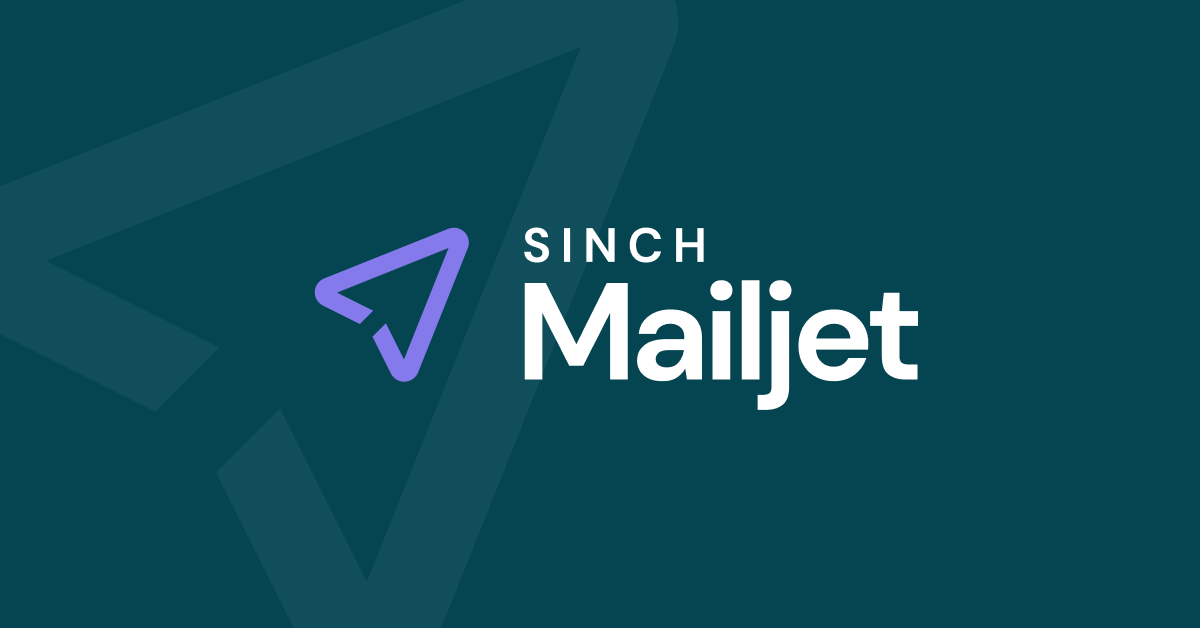Marketing
9 best ActiveCampaign alternatives for small businesses
Looking for an ActiveCampaign alternative? We've curated a list of the best alternatives to ActiveCampaign for your email marketing and newsletter needs.

PUBLISHED ON
Choosing the perfect email marketing solution can feel like finding a needle in a haystack.
With so many options, each boasting unique features, benefits, and pricing, how do you make the right decision?
ActiveCampaign is a popular choice for many, but it may not tick every box for your unique requirements. Let's dive into some of the top ActiveCampaign competitors that might better fit with what your business needs.
Table of contents
Table of contents
01Criteria for choosing an email marketing platform
02Best for affordability: Mailjet
03Best for beginners: Mailchimp
04Best for creators: Kit (formerly ConvertKit)
05Best for social media: Constant Contact
06Best for simplicity and ease of use: MailerLite
07Best for long-standing reliability: AWeber
08Best for all-in-one marketing solutions: HubSpot
09Best for e-commerce marketers: Omnisend
Criteria for choosing an email marketing platform
Picking an email marketing tool is like hiring a team member. It needs to fit your workflow, budget, and long-term goals. Instead of getting stuck in feature overload, focus on these key trade-offs:
1. Simplicity vs. advanced features
Some platforms prioritize ease of use, making it simple to create and send emails without a steep learning curve. Others offer deep customization, automation, and segmentation but come with added complexity. Choose based on how much control and flexibility you need.
2. Automation capabilities
Basic tools let you send scheduled emails and simple drip campaigns. More advanced platforms offer complex automation, behavioral triggers, and multi-step workflows. If your business relies on personalized, data-driven engagement, look for tools with robust automation.
3. Cost vs. scalability
Free or budget-friendly tools often cover the basics but may limit features like advanced reporting, A/B testing, or API access. More expensive options offer scalability, which is ideal if you expect to grow and need a long-term solution.
4. Design and collaboration
If polished emails are a priority, look for drag-and-drop editors, pre-built templates, and collaboration features. Some tools also support team workflows, allowing multiple users to edit and approve campaigns.
5. Integration and data syncing
Your email tool should work seamlessly with your existing CRM, e-commerce platform, or customer database. If syncing contact lists, purchase history, and engagement data is crucial, prioritize tools with strong native integrations or an open API.
6. Deliverability and analytics
Great emails mean nothing if they don’t land in inboxes. Look for tools that emphasize high deliverability rates, spam compliance, and in-depth analytics to track open rates, conversions, and customer behavior.
With that in mind, let’s run through our ActiveCampaign alternatives.
Platform | Best For | Overview Summary |
|---|---|---|
Platform | ||
Mailjet | Affordability | Offers an intuitive, cost-effective platform for both marketing and transactional emails with key features. |
Best For | ||
Mailchimp | Beginners | User-friendly with a free plan (up to 500 contacts), though it lacks advanced automation features. |
Overview Summary | ||
Kit | Creators | Focuses on automation and integrations for creators; free plan is limited and advanced tools require payment. |
Constant Contact | Social media | Combines email marketing with social media tools; strong delivery rates but higher-tier plans can be costly. |
MailerLite | Simplicity & ease of use | Known for its simple dashboard and visual data, though it has limited website building capabilities. |
AWeber | Reliability | A long-standing option with solid automation and analytics; however, it can feel a bit fragmented in its interface. |
HubSpot | All-in-one marketing solutions | Integrates CRM with email marketing on a generous free plan, but advanced features come at a high price. |
Omnisend | E-commerce marketers | Tailored for online stores with robust free features and automation, albeit with limited template options. |
Brevo | Multi-channel integration | Provides multi-channel capabilities (email, SMS, chat) in an intuitive interface, though reporting is basic on lower tiers. |
Best for affordability: Mailjet

Mailjet is more than just affordable. It’s packed with value. Every plan comes loaded with features that integrate into an intuitive platform for creating and deploying marketing and transactional emails, forms, and landing pages—all without breaking a sweat.
Unlike other providers, Mailjet doesn’t charge based on the number of contacts you have. You only pay for the emails you want to send, meaning as your audience grows, your price stays the same.
Its user-friendly interface and affordability make it popular with small businesses and growing teams looking to improve their email game. Mailjet helps you save time, cut costs, and focus on what truly matters.
Mailjet key features
Intuitive drag-and-drop email editor
Pre-built and customizable templates for campaigns
Automated email workflows for transactional and marketing emails
Seamless API integration to build custom experiences
Real-time collaboration tools for team-based editing
Mailjet limitations
No CRM features
Does not have SMS, WhatsApp or other channels
Mailjet pricing
Free: Up to 6,000 emails/month
Essential: $17/month for basic email tools
Premium: $27/month for advanced automation and analytics
Custom Enterprise: Contact Mailjet for tailored solutions
Best for beginners: Mailchimp

Mailchimp often pops up as a frontrunner for those embarking on their email marketing journey. Its user-friendly interface and a free plan (offering up to 500 contacts) make it appealing for beginners. However, its limitations in advanced email marketing automation and customization mean it might not serve more complex marketing strategies.
Key features:
User-friendly interface
Free plan with up to 500 contacts
Basic website builder
Limitations:
Lacks split testing in automations
Basic pop-up and landing page customization
Overpriced for advanced features
Pricing:
Free: Up to 500 contacts and up to 1,000 emails/month
Paid plans available for additional features
Best for creators: Kit (formerly ConvertKit)

Kit targets creators and businesses looking to grow their email lists with efficient automation tools.
It offers a free plan supporting up to 10,000 subscribers and includes powerful integrations with platforms like Shopify and Zapier. However, more advanced features require a paid plan.
Key features:
Powerful automation features
Wide range of integrations
Custom domain and landing page creation
Limitations:
Advanced features require paid plans
Limited free plan features
Pricing:
Free: Up to 10,000 subscribers on a single email sequence
Paid plans start at $29/month
Best for social media: Constant Contact

Constant Contact is ideal for businesses aiming to combine email marketing with social media strategies. Its drag-and-drop editor and high delivery rates are significant draws, though its higher-tier plans may be costly for small businesses.
Key features:
Automated email campaigns
High email delivery rates
Integration with social media platforms
Limitations:
Basic registration forms
Costly higher-tier plans
Pricing:
Free trial for up to 30 days
Starts at $12/month
Best for simplicity and ease of use: MailerLite

MailerLite excels in simplicity, making it a go-to for users who prioritize ease of creating campaigns and automations. Its visual data representation and intuitive automation builder are standout features, though its website building capabilities are limited.
Key features:
User-friendly dashboard
Visual data representation
Easy automation builder
Limitations:
Lack of spam and design testing tools
Basic embedded forms
Pricing:
Free up to 1,000 subscribers with basic features
Paid plans start at $10/month
Best for long-standing reliability: AWeber

With over 20 years in the industry, AWeber is a trusted choice for solopreneurs and users requiring basic CRM capabilities. Its innovative features like ‘ready to send’ email templates and automations that integrate with apps like YouTube and Etsy set it apart, though it lacks advanced features for large-scale campaigns.
Key features:
Strong email automation
Split testing and web analytics
Comprehensive app marketplace
Limitations:
Lack of spam and design testing tools
Available only in English
Pricing:
Free: Available for up to 500 subscribers
Paid: Starts at $15/month
Best for all-in-one marketing solutions: HubSpot

HubSpot stands out for its all-in-one platform that combines CRM, email marketing, and more. The generous free plan is a boon for small businesses, though advanced automation features require a costly upgrade.
Key features:
Generous free plan with CRM integration
Powerful contact management
Excellent reporting features
Limitations:
Expensive advanced features
Branding on free plan outputs
Pricing:
Free: CRM and basic features
Professional plan starts at $800/month
Best for e-commerce marketers: Omnisend

Omnisend is tailored for e-commerce marketers needing advanced features in a cost-effective package. Its free plan includes omnichannel marketing and automation workflows, though it falls short on deliverability rates and template variety.
Key features:
Advanced features in free plan
Designed for e-commerce
Responsive email editor
Limitations:
Limited email templates
Poor deliverability rate
Available only in English
Pricing:
Free: Up to 250 contacts
Paid plans start at $16/month
Best for multi-channel integration: Brevo

Brevo shines with its integration of multiple marketing channels, including email, SMS, and live chat. It offers an intuitive interface and extensive automation options, yet its reporting features are limited on lower-tier plans.
Key features:
Seamless multi-channel integration
User-friendly interface
Free CRM integration
Limitations:
Limited reporting features
Fluctuating deliverability rates
Pricing:
Free: Up to 300 emails/day
Starter plan starts at $9/month
Choose the right ActiveCampaign alternative today
Choosing the right email marketing tool hinges on your specific needs and budget. Whether you seek simplicity, comprehensive engagement, or advanced automation, there's a platform out there tailored for you.
Mailchimp, Kit, and MailerLite are great for beginners, while Constant Contact and HubSpot provide more robust solutions for businesses ready to scale. Mailjet is best for small businesses that want an affordable and comprehensive platform.
Ultimately, the perfect alternative to ActiveCampaign is one that aligns with your business goals and offers room for growth.
So, take your time, explore these options, and find the platform that will help take your email marketing efforts to new height.








